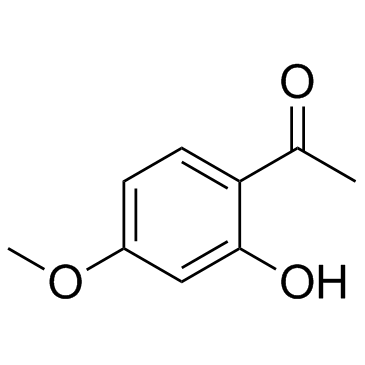Influence of co-administered danshensu on pharmacokinetic fate and tissue distribution of paeonol in rats.
Hua Li, Siwang Wang, Bangle Zhang, Yanhua Xie, Jianbo Wang, Qian Yang, Wei Cao, Jing Hu, Linrui Duan
文献索引:Planta Med. 78(2) , 135-40, (2012)
全文:HTML全文
摘要
Cortex Moutan (root bark of Paeonia suffruticosa Andrew) and Radix Salviae miltiorrhizae (root and rhizome of Salvia miltiorrhiza Bunge) are two herbs widely used in traditional Chinese medicine (TCM) to treat cerebrovascular and cardiovascular diseases. In clinical practice, these two herbs are prescribed together. Studies on the pharmacokinetic interaction between the active constituents of these two herbs (paeonol and danshensu, respectively) can provide substantial foundation for understanding its mechanism and empirical evidence to support the clinical practice. A simple and sensitive high-performance liquid chromatographic (HPLC) method coupled with ultraviolet detector was developed for determination of paeonol in plasma and different tissues (heart, liver, spleen, lung, kidney, and brain) of male Sprague-Dawley rats. When co-administering danshensu, the peak plasma concentration of paeonol was decreased (p < 0.01), the mean residence time (MRT) was prolonged (p < 0.001), the volume of distribution (Vd/F) was increased (p < 0.001), and the concentrations of paeonol in heart, brain, and lung were dramatically increased (p < 0.01 or p < 0.001), compared with these values for rats administered paeonol alone. The results showed that the co-administration of danshensu could alter pharmacokinetic fate and tissue distribution of paeonol in rats, especially in heart and brain, providing substantial foundation for the investigation of the impact of danshensu on paeonol in clinical applications.© Georg Thieme Verlag KG Stuttgart · New York.
相关化合物
| 结构式 | 名称/CAS号 | 分子式 | 全部文献 |
|---|---|---|---|
 |
丹皮酚
CAS:552-41-0 |
C9H10O3 |
|
Competitive molecular interaction among paeonol-loaded lipos...
2012-11-15 [Int. J. Pharm. 438(1-2) , 91-7, (2012)] |
|
Paeonol inhibits oxidized low density lipoprotein-induced mo...
2012-01-01 [Biol. Pharm. Bull. 35(5) , 767-72, (2012)] |
|
Effect of paeonol on antioxidant and immune regulatory activ...
2012-01-01 [Molecules 17(4) , 4672-83, (2012)] |
|
Cardioprotective effect of paeonol and danshensu combination...
2012-01-01 [PLoS ONE 7(11) , e48872, (2012)] |
|
Simultaneous determination of danshensu, salvianolic acid B,...
2013-01-01 [J. AOAC Int. 96(1) , 20-3, (2013)] |